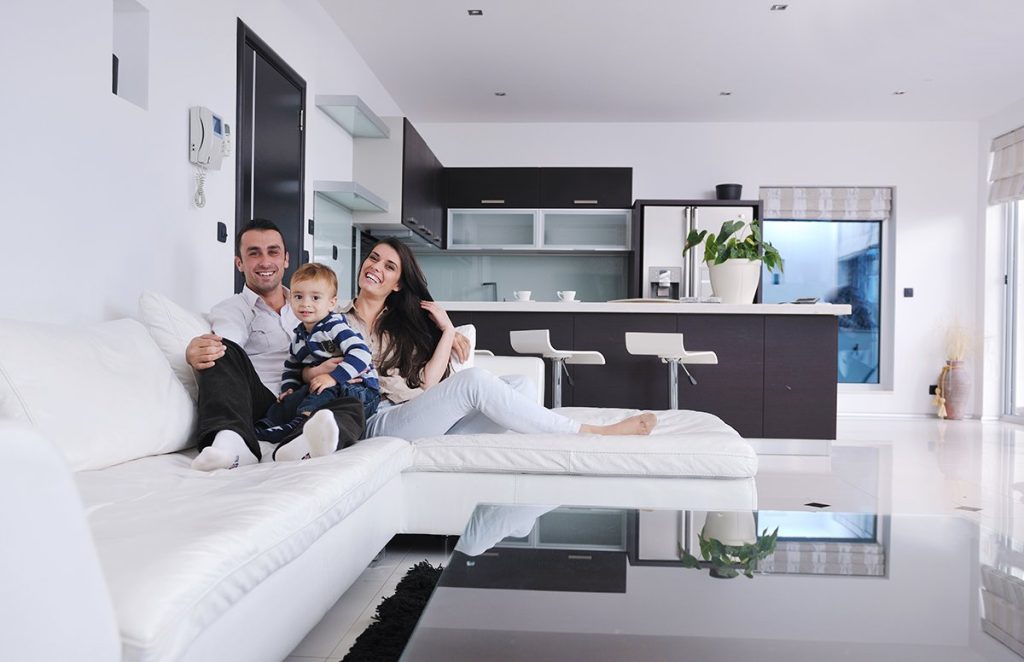Creating a home that is safe for both young children and seniors can be a delicate balance. Whether you’re a new parent, a caregiver, or a homeowner planning ahead, designing a space that accommodates all ages requires attention to detail, thoughtful design, and a modern approach. This blog post explores actionable steps and strategies to childproof and ensure senior-safe design without sacrificing your home’s style or functionality.
Why Safety-First Design Matters
Accidents at home are a leading cause of injury, particularly among children and seniors. The CDC reports that falls are the most common cause of nonfatal injuries among children under 15 and adults over 65. Childproofing and implementing age-friendly changes can prevent accidents, promote independence, and provide peace of mind for families.
The challenge is to integrate safety features without disrupting the aesthetic and flow of your home. With a mix of technology, design hacks, and practical changes, you can achieve a balance between style and functionality.
Essential Childproofing Tips for Modern Homes
1. Secure Furniture and Appliances
Kids love to climb, and unsecured furniture or appliances can pose a tipping risk.
Solutions:
- Anchor bookshelves, cabinets, and dressers to the wall using safety brackets.
- Install anti-tip straps on TVs and other heavy electronics.
By securing these items, you make your home much safer while maintaining a clean and open design.
2. Install Child Safety Gates
Staircases and specific rooms can be dangerous for toddlers. Consider safety gates with a modern, minimalist design that blends well with your home decor. Opt for gates that are easy for adults to open and close but secure enough for babies.
3. Cover Electrical Outlets
Electrical outlets are a magnet for curious little fingers. Use tamper-resistant outlet covers to prevent accidental shocks. Clear, simple designs ensure that these covers don’t detract from your room’s overall appearance.
4. Technology is Your Friend
Modern technology offers advanced childproofing solutions. For example, installing a smart deadbolt lock on main entry doors ensures that kids can’t wander outside unsupervised while allowing easy access for adults. These smart locks also provide added security for the entire household.
Senior-Safe Design Tips for Aging in Place
For older adults, safety and accessibility are key. Here are some ways to make a home more accommodating for seniors without it looking overly clinical.
1. Prevent Slips and Falls
Slips are a leading cause of injuries in seniors, especially in areas like bathrooms and kitchens.
Solutions:
- Use non-slip rugs or secure existing rugs with slip-resistant pads.
- Install grab bars in bathrooms near the toilet and shower. Luckily, modern grab bars are available in stylish designs that complement contemporary bathrooms.
2. Adapt Lighting Levels
Good lighting is essential for better visibility, particularly for those with declining eyesight.
- Use motion-activated lights in hallways and bathrooms to prevent nighttime falls.
- Add under-cabinet lights in kitchens for precision while cooking.
Adjustable lighting fixtures and LED bulbs can also help create a well-lit and welcoming space.
3. Adjust Hardware and Switches
Small changes can make a big difference in accessibility.
- Replace doorknobs with lever handles, which are easier to use for individuals with limited hand strength.
- Lower electrical switches and install rocker-style switches that don’t require pinching or twisting to operate.
4. Organize with Accessibility in Mind
Ensure frequently used items like utensils, toiletries, and clothing are stored within easy reach. This minimizes the need for bending or climbing.
- Use pull-out drawers in the kitchen to improve access to cabinet contents.
- Add shelving in closets and bathrooms at reachable heights.
Universal Safety Measures for a Multi-Generational Home
Some safety features benefit both children and seniors alike.
1. Enhanced Flooring Choices
Choose non-slip flooring materials such as textured vinyl or rubber in high-risk areas. These materials are both safe and stylish, making them ideal for multi-generational households.
2. Secure Railings and Handrails
Sturdy railings along staircases and outdoor spaces are a must. Look for modern designs in stainless steel or sleek wood to match your home’s aesthetic while ensuring stability for everyone.
3. Smart Home Systems
The rise of smart home technology has made it easier than ever to create safer living environments.
- Install video doorbells to monitor visitors and ensure no unwanted guests slip past.
- Use voice-controlled devices to control lighting, temperature, and even locks on your home.
These features not only offer convenience but also enhance safety for all residents.
Stylish Yet Functional Design Choices
It’s possible to incorporate childproofing and senior-safe features in a way that complements, rather than detracts from, your home’s overall design.
Elegant Materials
Replace sharp-edged furniture with rounded designs crafted from natural wood or soft metals. These designs not only reduce injury risks but also offer a warm, seamless look.
Minimalist Elements
Avoid clutter by focusing on simplicity. Use multipurpose furniture with hidden child-safe storage or open layout designs to reduce tripping hazards.
Blend Safety and Style
For instance, modern baby gates come in brushed metal or clear acrylic options, which serve the purpose while looking sophisticated. Similarly, many grab bars are now offered with sleek, polished finishes, ensuring they blend in with the bathroom rather than stand out.
Safety is a Family Affair
Designing a home for both children and seniors doesn’t mean compromising on style. By integrating thoughtful childproofing measures and senior-friendly updates, you create an environment where every family member feels safe, valued, and empowered.
From strategic furniture placement to a simple upgrade like installing a smart deadbolt lock, small changes can make a world of difference. Whether you’re a parent keeping your children safe or a caregiver assisting an older loved one, the key to a functional home lies in balancing utility, safety, and elegance.

